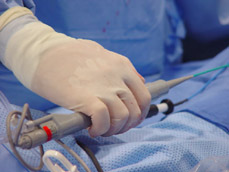Cardiac catheterization is a procedure that punctures an artery or vein, usually located in the groin area, so that a small, long, flexible tube can be guided into the heart and major vessels around the heart.
The cardiac catheter is moved through the heart with the aid of an x-ray machine. This is usually done for diagnosing heart problems.
Interventional cardiac catheterization is a type of procedure where actual treatments can be performed by use of specialized catheters. These specialized catheters include balloon catheters that can open up narrowed valves or arteries and also catheters where devices can be deployed which can close extra vessels or certain “holes” in the heart.
Some intervention procedures are considered the first choice in treatment and are preferred over surgery. Some interventions are considered as a short-term solution until more definitive surgical procedures can be performed more safely. The types of cardiac catheterization performed are different for each patient. It is usually used where there are narrowed valves or arteries causing obstruction of blood flow.
Before the procedure the patient will need certain tests including a chest X-ray, an electrocardiogram (EKG), and some blood tests. The patient will be given some medication to make him sleepy before the procedure.After the catheterization, the patient will be taken to a recovery room where you will be observed for a couple of hours.
Depending on the type of intervention performed and how well the patient recovers, a longer period of observation or overnight admission to the cardiac unit may be required.
Ask your doctor for a more detailed explanation of this procedure.
